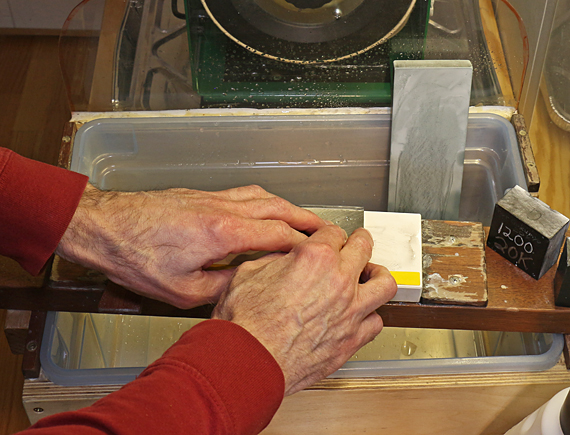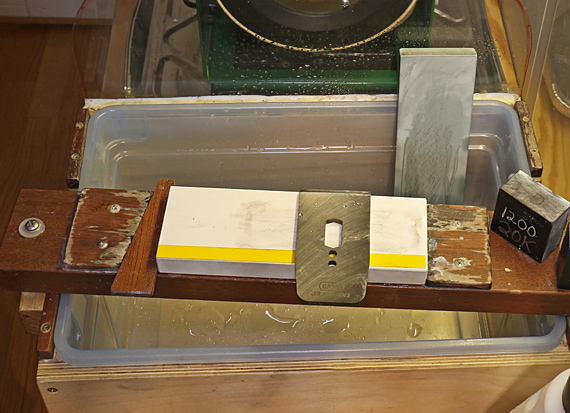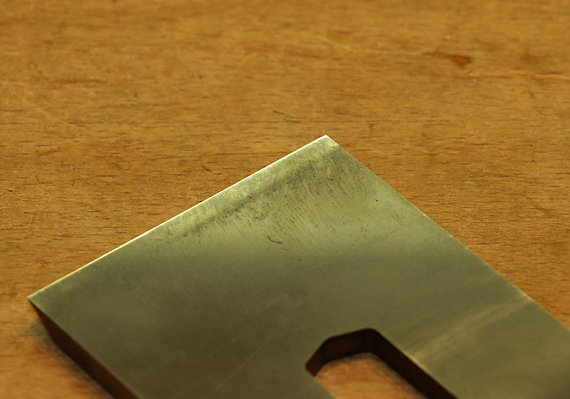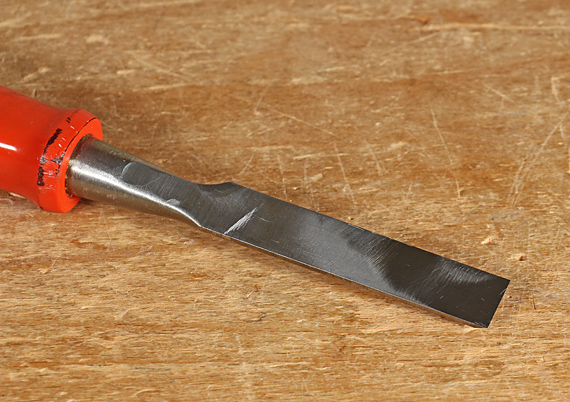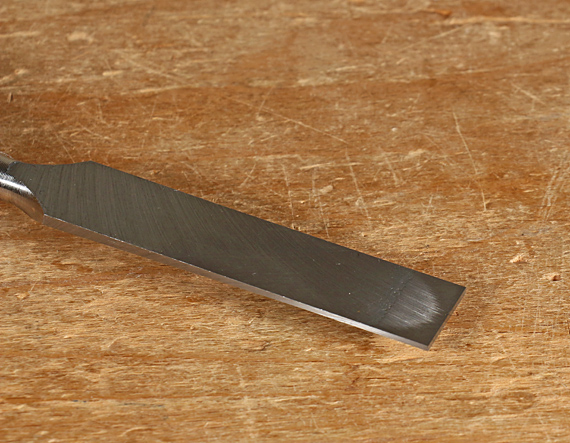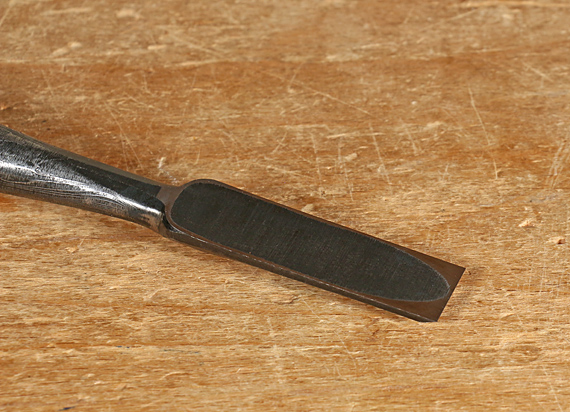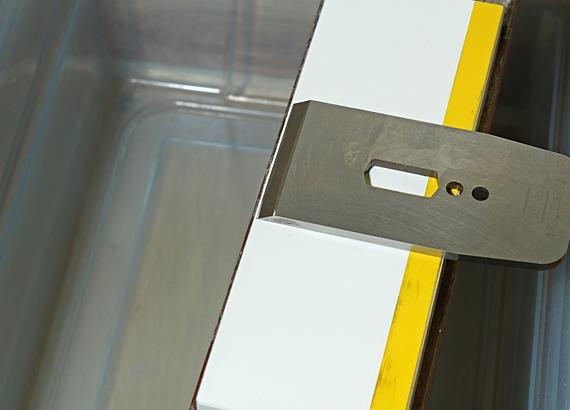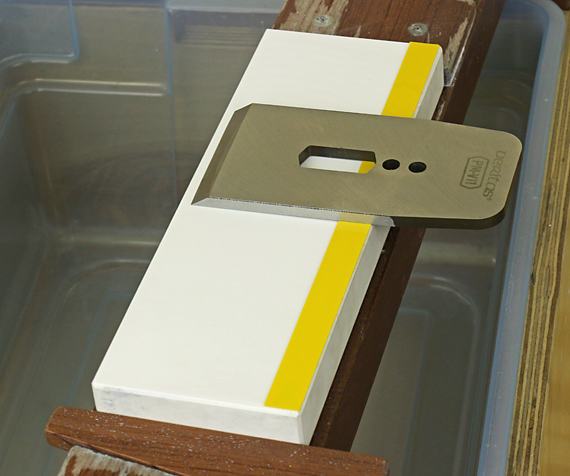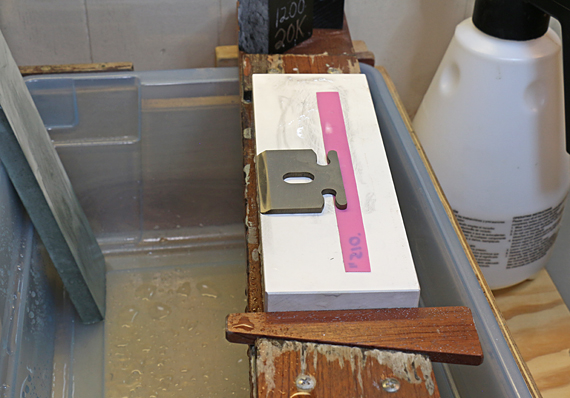
Ironically, I do not use a ruler for the Ruler Trick. As I described in a post about five years ago, I like a 0.020″ strip of plastic cut from shim stock and roughened on the bottom for a better grip on the stone. This is about the same thickness as a 1/2mm ruler.
One advantage of using shim stock is for short blades. In the photo above, I am using a 0.015″ shim to raise the spokeshave blade to approximately the same angle as a 0.020″ shim raises a full size blade that fully straddles the stone. Perhaps this adjustment matters little but it helps keep my sharpening technique consistent and it is simple to do.
Many specialty and joinery planes have short blades, and many are bedded bevel up. Some of the bevel-up blades, such as side rabbet planes, have quite a low clearance angle. The Ruler Trick is especially helpful on these.
The blade of the wonderful Veritas router plane is detachable from its vertical stem for convenient sharpening. The clearance angle of the blade as installed in the plane is only about 5°. For this little blade, only about 1 inch long, a 0.005″ shim gives about same 1/2° back bevel as a ruler or 0.020″ shim under a full size blade.
Regarding the direction of Ruler Trick honing as discussed in the previous post, the spokeshave blade above is about the shortest I can practically use the across-the-edge motion. For very short blades like the router and for short skew-edged blades, the along-the-edge motion is more practical.
Woodworkers are indebted to the late David Charlesworth for the Ruler Trick and for the abundance of his other insightful teaching.

